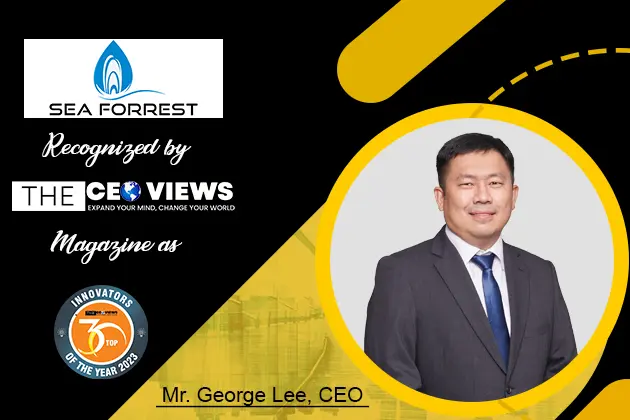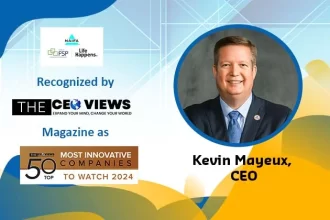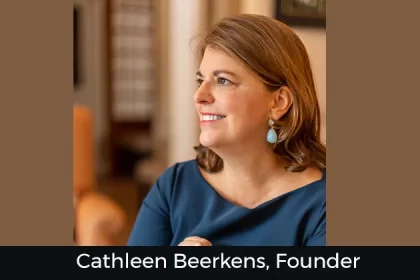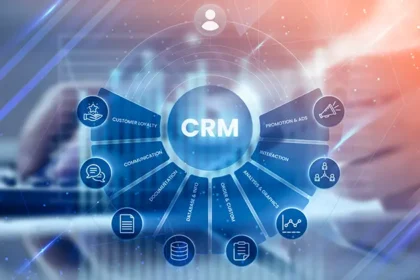The maritime industry is dynamic and complex. Constantly being affected by the changing shifts in global trends and technologies, the industry is looking for ways to steer decarbonization through electrification and low–carbon fuels, to embark on a path to zero emission.
Sea Forrest, a leading provider of green technology solutions, leverages innovation and technology to develop green solutions for clients that guide the industry towards decarbonization. George Lee, CEO of Sea Forrest was with The CEO Views team to walk us through the remarkable journey of the company, giving us better insights into its strengths and unique value propositions.
Inspiration Behind Inception
George Lee’s journey commenced with a profound passion for the sea and an enchantment with the marine environment, particularly the serene underwater scenes of kelp forests. This strong affinity for the ocean served as the inspiration behind the company’s name, Sea Forrest. Notably, kelp forests are among the planet’s largest carbon sinks, a fascinating connection.
After securing a scholarship for mechanical engineering, George embarked on a career in the marine and offshore sector, accumulating invaluable experience in diverse roles. As he observed the sector’s substantial role in green-house gas emissions and noted that vessel owners were adopting a cautious stance due to the absence of marine electric charging infrastructure, uncertainties in the supply chain for alternative net-zero fuels, and the early stage of decarbonization technology, he became acutely aware of the urgency for transformative change.
Driven by a well–defined vision and a passion for sustainable innovation, George inaugurated Sea Forrest in 2011. The company specializes in marine and offshore project management, with a focus on oil rig construction and sustainable solutions for offshore vessels and platforms.
Sustainability is an integral part of our leadership ethos, driving our commitment to crafting pragmatic and environmentally responsible solutions.
Success Story
Sea Forrest’s journey began with George’s relentless pursuit of greener, more eco–conscious solutions. What started with solar panels and batteries soon expanded into a comprehensive range of electric and hybrid propulsion, energy management, and energy storage systems. Crucially, George has always emphasized on practical and actionable approaches to carbon reduction, as well as affordability, recognizing that these factors are vital in encouraging widespread adoption of technology to reduce their carbon footprint.
Over the years, Sea Forrest has evolved from a project management firm for oil rig construction to a cutting–edge system integrator and now, a leading provider of green technology solutions.
One of the most significant milestones for the company was the successful delivery of a hybrid propulsion system for Singapore’s first hybrid powered pilot boat, the Penguin Tenaga. This achievement marked the beginning of Sea Forrest’s journey into energy management systems, comprehensive product range of electric and hybrid solutions, catering to various vessel types and operational profiles.
In a momentous event this year, Singapore’s Minister for Trade and Industry took keen interest in Sea Forrest, gracing their Creation Lab with a visit to launch the Sustainability Playbook For Enterprises: Embarking On Your Environmental, Social And Governance Journey.
Sea Forrest’s commitment to green technology and sustainability is not just a business endeavor; it’s a journey towards a more eco–friendly, sustainable future for all.
Green Energy Solutions
Sea Forrest is in the business of delivering sustainable and decarbonising solutions to the maritime industry. They specialise in delivering energy management solutions through marine electric and hybrid propulsion, marine charging, and marine energy storage systems.
Sea Forrest offers an extensive portfolio of sustainable energy of products and solutions which includes, Full Electric, Green Hybrid & Full Electric Ready Propulsion Systems, “SEAGEN 11” Marine Type–Approved Lithium-ion Batteries, “Energy Cube” Marine & Offshore Energy Storage System, “Green Cabin” Energy Saving System, and Marine Smart Electric Charging System.
Powering Maritime Sustainability
Hybridization and electrification play a pivotal role in the maritime industry’s pursuit of environmental sustainability. As a sector responsible for contributing 3% of global emissions, the maritime industry has come under increased scrutiny for its environmental impact.
Sea Forrest is a pioneering force in Singapore’s ongoing journey towards decarbonizing the maritime industry. What sets them apart in the market is their ability to provide comprehensive solutions, including full electric and hybrid propulsion systems, along with in-house marinized type-approved batteries, energy storage systems, and their proprietary energy management systems.
What truly distinguishes Sea Forrest is their holistic approach to the maritime electrification challenge. “We not only design and assemble these systems but also offer fully integrated solutions, which encompass software and in-house programming,” George elaborates.
“Our solutions are device–agnostic to equipment brands and future energy sources and are available in retrofittable kits to suit different types of platforms and operating profiles. In this way, our solutions assist vessel owners in making significant steps toward meeting the 2030/2050 decarbonization targets.”
Setting New Benchmarks for Maritime Industry
In shaping new benchmarks for the marine industry, Sea Forrest’s leadership approach is firmly rooted in a fusion of innovation, adaptability, and an unwavering commitment to sustainability. These principles guide their decision–making processes, guiding the company to continually explore and implement cutting–edge technologies and practices. “Sustainability is an integral part of our leadership ethos, driving our commitment to crafting pragmatic and environmentally responsible solutions,” shares George.
Our solutions are device-agnostic to equipment brands and future energy sources.
Fostering a Culture of Innovation
Despite boasting over a decade of experience in the industry, Sea Forrest has consistently nurtured a culture of innovation within the company. As a technology–driven firm, Sea Forrest prioritizes the creation of an environment where creativity is not only encouraged but also celebrated. This involves empowering team members to freely share their ideas and fostering a culture of openness and collaboration.
Navigating Challenges with a Proactive Approach
Beyond the other rising challenges, one significant challenge in the local industry is the sluggish adoption of vessel electrification. On a global scale, the lack of standardized charging station specifications poses another significant challenge. Unlike land–based electrical plugs, there is no global regulatory body that mandates a single standard for maritime charging.
To address these challenges, Sea Forrest takes a proactive approach. They are working diligently to raise awareness about the benefits of vessel electrification and the importance of early adoption, leveraging a step-change approach that aligns with technological advancements. Additionally, they are collaborating with industry stakeholders to encourage the development of standardized charging solutions. By participating in initiatives that promote common standards and providing flexible and adaptable electrification solutions, the team aims to help ship-owners navigate the electrification journey with confidence and efficiency.
Envisioning the Future
The future of the maritime sustainability industry is undoubtedly heading towards a heightened focus on environmental consciousness and the adoption of innovative technologies and practices to minimize ecological impact. To position the company optimally in this evolving landscape, Sea Forrest has devised a multifaceted strategy.
At Sea Forrest, the team is committed to attracting talent and investing heavily in research and development. They are dedicated to fostering strategic partnerships with like–minded entities, creating a collaborative ecosystem for driving sustainability.
George says, “By continually adapting and integrating sustainable practices into our operations, our aim is not only to thrive in the future of the maritime sustainability industry but also to actively contribute to its positive evolution. We believe that by aligning our efforts with the industry’s environmental goals and investing in innovation, we will play a pivotal role in shaping a more sustainable maritime future.”










